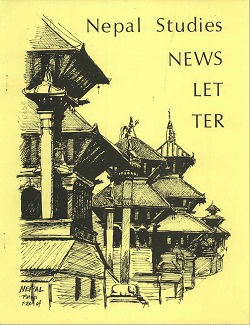Author Biography
Bryony Whitmarsh (MA) is a PhD candidate at the School of Oriental and African Studies, University of London, studying with Michael Hutt. She works as a Senior Lecturer in the School of Architecture at the University of Portsmouth. Before this, she held a ten-year museum career.
Abstract
This article focuses on a particular time (present-day Nepal, post-monarchy) and site (the Narayanhiti Palace Museum) that offers a compelling space for understanding the negotiation of the country’s recent past, revealing much about the transition from royal to republican Nepal. Acknowledging that the social and historical location of the museum causes it to bear the imprint of social relations beyond its walls, this article asks: How is Nepal’s royal past now understood, and who authorizes the understanding? There is no king governing Narayanhiti Palace, and the state does not use the palace to conduct its affairs; the politics of the space therefore risk being concealed by its open gates. This article explores the re-creation of a stable imagined past, in contrast with both the urban chaos of contemporary Kathmandu and with the political instability of Republican Nepal’s capital. Based on ethnographic research ‘behind the scenes’ at the museum, I take Annis’ analogy of the museum as ‘staging ground’ (1986) and explore the museum as both a space where decisions are made about what stories are told (sanctifying some forms of remembering and endorsing forgetting), as well as a space experienced by both ex-palace staff and visitors. These people bring the past to mind, combining their imaginations and memories with the environment of the museum. I suggest that official representations try to secure an image of a unified national identity that simultaneously remembers and forgets the king (Lakier 2009; Hutt 2006). As the city and the nation continue to reinvent themselves, the carefully constructed ‘non-place’ of the unchanging Palace Museum is being revealed. No king rules from Narayanhiti Palace and the state does not use the palace to conduct its affairs; the politics of the space therefore risk being concealed by its open gates. I explore the re-creation of a stable imagined past, in contrast both with the urban chaos of the contemporary city of Kathmandu and the political instability of the capital in Republican Nepal Based on ethnographic research ‘behind the scenes’ at the museum, I take Annis’ analogy of the museum as ‘staging ground’ (1986) and explore the museum as both a space where decisions are made about what stories are told, (sanctifying some forms of remembering and endorsing forgetting) and a space experienced by both ex-palace staff and visitors, who bring the past to mind, combining their imaginations and memories with the environment of the museum. I suggest that official representations try to secure an image of a unified national identity that simultaneously remembers and forgets the king (Lakier 2009, Hutt 2006). As the city and the nation continues to reinvent itself, the unchanging carefully constructed non-place of the Palace Museum is being revealed.
Acknowledgements
Endless thanks are due for the patience of the author’s supervisor, Michael Hutt. She is grateful to both Lekh Bahadur Karki and Rohit Dunghana as Directors of the Palace Museum for the opportunity to work with their staff during field visits in 2013, 2014 and 2015; to Rukmani Gurung for her hours of patience while interviewing her and her colleagues about their work at the museum; to Ashesh Rajbansh, Editor of SPACES Magazine for the use of his excellent quality images to illustrate this article; and to Radhika Thapa, Rina Chaudhary, Janak Hamal, and Kabi Koirala who assisted with the author’s research in July 2014. The author is also grateful to Kunal Tejbir Lama, her unofficial research mentor, and to the authors and special issue editors of this volume, Heather Hindman and Andrew Nelson, for coordinating the panel in 2014 and nurturing this paper into existence.
Creative Commons License

This work is licensed under a Creative Commons Attribution 4.0 License.
Recommended Citation
Whitmarsh, Bryony R.. 2017. Staging Memories at the Narayanhiti Palace Museum, Kathmandu. HIMALAYA 37(1).
Available at:
https://digitalcommons.macalester.edu/himalaya/vol37/iss1/13


